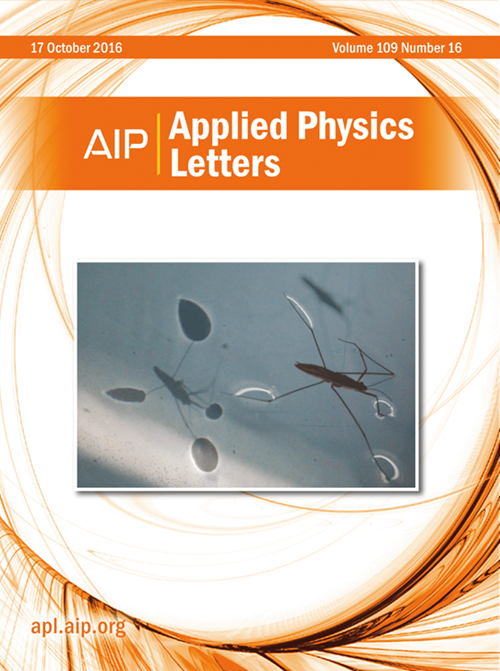RF-sputtered Al-doped ZnO-based transparent electrochemical capacitors developed as a structural energy storage to replace double-glazed window for a smart building
IF 3.5
2区 物理与天体物理
Q2 PHYSICS, APPLIED
引用次数: 0
Abstract
Structural energy storage combines energy storage with structural strength, reducing weight, saving space, and improving efficiency. Among various types, transparent structural energy storage shows strong potential for seamless integration into windows, screens, surfaces, consumer electronics, and automotive applications. Developing new electrode designs with environmentally abundant materials is essential to achieving global decarbonization goals and the net-zero target. In this work, we developed a transparent electrochemical capacitor (TEC) as a structural energy storage using aluminum-doped ZnO (AZO) film prepared by radio frequency sputtering on an indium-doped tin oxide (ITO) glass. We observed that the excellent electrical properties of the AZO film including high carrier concentration 6.54 × 1020 cm−3, Hall mobility 25.8 cm2 V−1 s−1, and resistivity 3.7 × 10−4 Ω cm contributed to enhancing the electrochemical performance of the TEC. The prepared transparent AZO exhibits a high specific capacitance of 44.4 μF cm−2 at 1 mV s−1 for a three-electrode study in a liquid electrolyte. The TEC fabricated using gel electrolyte shows a specific capacitance of 5.93 μF cm−2 at 1 mV s−1. We observed that both the electrochemical double-layer capacitance and pseudo-capacitance contributed to the charge storage in TEC, which was measured using Dunn's method. The double-glazed window shape of the TEC exhibits its promising potential for implementation as structural energy storage in smart buildings. We demonstrated TEC performance under various temperatures (−10 to 30 °C), its transparency of about 85% in the visible light range, and its integration capabilities with solar cells. This TEC aims to develop a structural element for smart buildings or autonomous electric vehicles.求助全文
约1分钟内获得全文
求助全文
来源期刊

Applied Physics Letters
物理-物理:应用
CiteScore
6.40
自引率
10.00%
发文量
1821
审稿时长
1.6 months
期刊介绍:
Applied Physics Letters (APL) features concise, up-to-date reports on significant new findings in applied physics. Emphasizing rapid dissemination of key data and new physical insights, APL offers prompt publication of new experimental and theoretical papers reporting applications of physics phenomena to all branches of science, engineering, and modern technology.
In addition to regular articles, the journal also publishes invited Fast Track, Perspectives, and in-depth Editorials which report on cutting-edge areas in applied physics.
APL Perspectives are forward-looking invited letters which highlight recent developments or discoveries. Emphasis is placed on very recent developments, potentially disruptive technologies, open questions and possible solutions. They also include a mini-roadmap detailing where the community should direct efforts in order for the phenomena to be viable for application and the challenges associated with meeting that performance threshold. Perspectives are characterized by personal viewpoints and opinions of recognized experts in the field.
Fast Track articles are invited original research articles that report results that are particularly novel and important or provide a significant advancement in an emerging field. Because of the urgency and scientific importance of the work, the peer review process is accelerated. If, during the review process, it becomes apparent that the paper does not meet the Fast Track criterion, it is returned to a normal track.
 求助内容:
求助内容: 应助结果提醒方式:
应助结果提醒方式:


